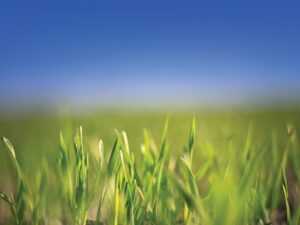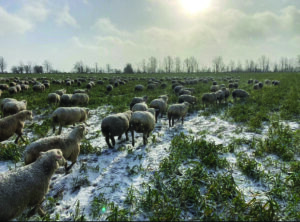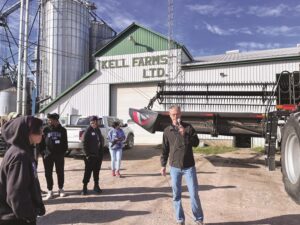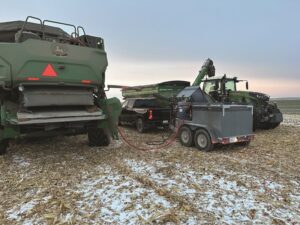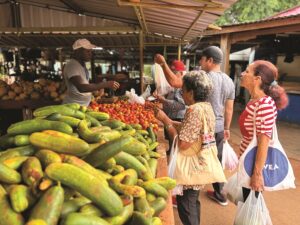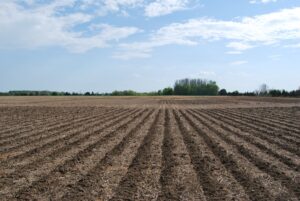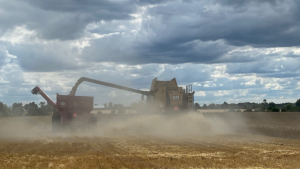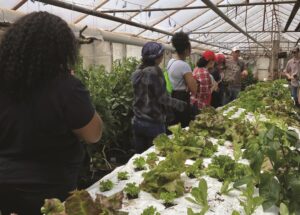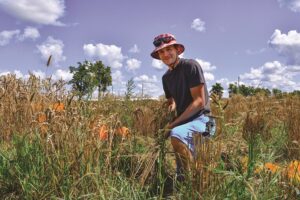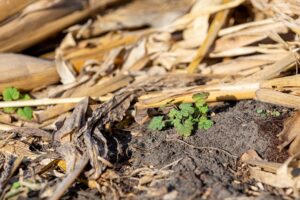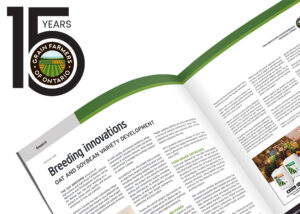Overwintering winter wheat
VARIETY RESEARCH SHOWS PROMISE FOR FUTURE PLANT BREEDING
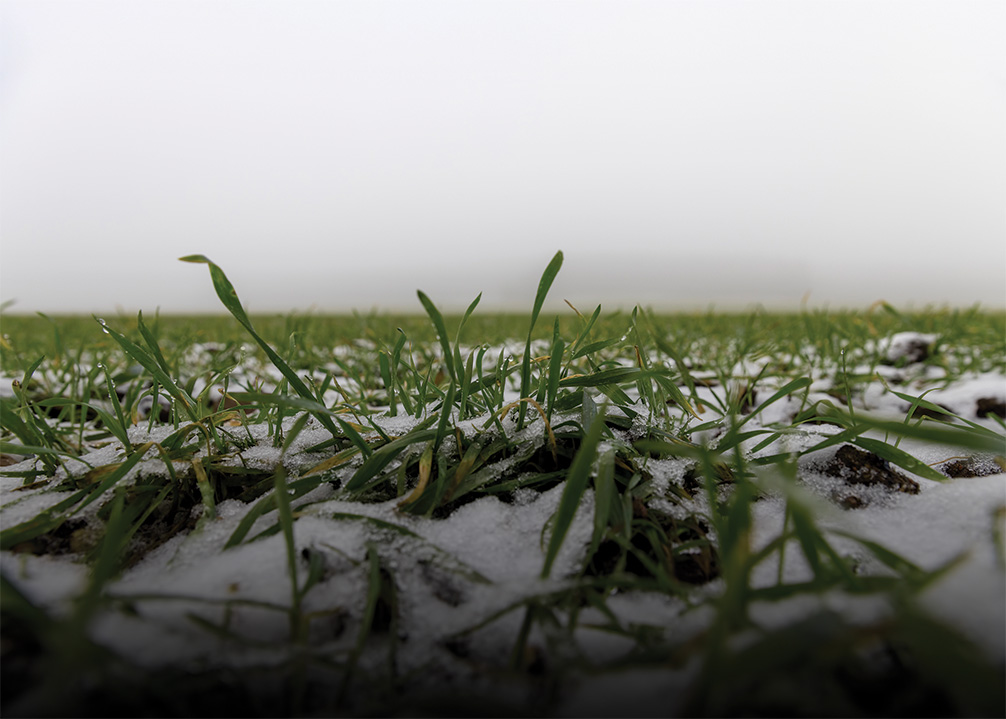
Many farmers in Ontario are already reaping the benefits of growing winter wheat. These range from reduced soil erosion and compaction to weed suppression and spreading out the yearly planting workload.
“The crop itself can be harvested for straw and grain for food and also livestock feed use, adding to farm revenue,” says Jaber Husiny, a research associate in the Department of Plant Agriculture at the University of Guelph who recently completed a master’s degree looking at a new way to screen for cultivars that overwinter better than others.
Working with a team of researchers at the University of Guelph, Dr. Dave Hooker, associate professor and field crop agronomist at the University of Guelph Ridgetown Campus, has found that corn yields can rise on average more than 15 per cent and soybeans 13 per cent when winter wheat is added to the rotation. During dry years, soybean yields go up an astounding 20 to 30 per cent depending on the tillage system. Looking at the results of a long-term 28-year study, this team also found that using wheat in the rotation reduces the dependence on nitrogen fertilizer. Combining this rotation with reduced tillage in their study also resulted in increased nitrogen and organic carbon, benefiting soil microbes.
But not all cultivars survive equally over the harsh times of the year. In some fields, Ontario winter wheat growers can struggle with maintaining viable wheat stands through winter and early spring, notes Hooker, especially with ice, snow cover (or lack thereof), and freeze-thaw during early spring. “It would, therefore, be very useful to have a reliable screening method to determine survival rates,” he says. “Wheat breeders need these techniques to help them introduce or enhance traits associated with winter survival.”
Hooker and his colleague Dr. Michel McElroy at the Grain Research Centre (CÉROM) in Quebec have conducted a small preliminary study looking at how to mimic conditions that cause wheat to die overwinter, such as pooling water and ice accumulation. They looked at three cultivars in a furrow/ridge system to try to catch the melting snow in the late winter/early spring in order to subject plants to the freeze-thaw cycle in a more regular and controlled way. They also did irrigation and winter covering treatments. In the second phase, the most effective treatments were applied to 10 cultivars at two sites, Beloeil in Quebec and Ridgetown in Ontario.
“None of the proposed screening methodologies were effective for screening the varieties that we tested, but ruling out the methodologies is a valuable step,” says Hooker. “Winter wheat survival was excellent in all screening methodologies.” He adds that “the project highlighted the difficulties in screening trials under uncontrolled conditions (outdoors) and that simple single-factor explanations (low temperatures, freeze-thaw cycles, spring water accumulation) may be insufficient to predict how well wheat will overwinter.”
NEW METHOD UNDER CONTROLLED CONDITIONS
There hasn’t been much investigation into assessing the survival of winter wheat under low-temperature flooding and ice encasement (LTFIE) in controlled lab conditions. However, Husiny created a unique and accurate method during his master’s thesis (under the direction of Dr. Eric Lyons at U of Guelph, with Hooker and McElroy on his advisory committee).
“Previous studies did not hold plants under ice for extended periods of time in controlled environments,” Husiny explains. “The few studies that did use whole plants did not apply ice using a spot sprayer after a gradual decrease in temperature and they used different media. They also used different cultivars, temperatures and environments.”
Husiny’s unique method confirmed genetic survival differences of four Ontario-acclimated cultivars, AC Carberry, Branson, CM614, and Norstar. He measured days and ambient temperature that caused 50 per cent mortality in plants frozen in ice. He found AC Carberry to perform the best, never reaching 50 per cent mortality, with Norstar next best, followed by Branson and CM614.
Husiny also looked at concentrations of simple sugar, fructan, and sucrose present under periods during the experiments of plant acclimation and time frozen in ice. These levels seem to correlate with survival to some extent. However, he would like to see his methodology employed in more in-depth genetics studies that utilize large numbers of cultivars and attempt to identify genes related to overwintering survival.
“One study already completed that has some overlap in methodology and cultivars used in my study is the recent PhD thesis of Rachel Whiting at the University of Guelph, where Whiting studied genetic, physiological, and molecular traits associated with cold adaptation of eastern Canadian winter wheat,” he says. This was a follow- up to a large-scale genetics study on winter survival of eastern Canadian winter wheat published in early 2024 by Dr. Andy Chen and his team at the University of Guelph and McElroy that examined 415 cultivars. The team examined genetic markers and found an allelic combination that breeders can adapt to ensure consistent winter survival in the main winter wheat-growing regions of Canada.
Meanwhile, the response to Husiny’s methodology has been positive. “I’ve presented my work at multiple conferences and have received a lot of interest,” he says. “Other students in Dr. Eric Lyons’ lab have used certain aspects of my methods for their research, and there have been other students who have inquired about my methodology at the University of Guelph and beyond. My paper on the method has been downloaded over 360 times thus far and the paper was also named Editor’s Choice in the Canadian Journal of Plant Science.”
Looking back and ahead, Husiny adds, “it’s great to have contributed to the efforts to create winter wheat cultivars with better survival that will allow for greater incorporation of winter wheat in Ontario’s crop rotation. I hope that studies continue to build off of this and continually improve the methodology so we can better screen for LTFIE in Canadian winter wheat and ultimately lead to better cultivar development.”
With all the study results to this point, Hooker believes winter wheat should be elevated to the status of soybeans and corn as a main crop in Ontario, especially in the Great Lakes region.
“Since we’ve quantified the effect of wheat — in terms of an enterprise on its own, and its effect on corn and soybean yields — it’s one of the most important crops for Ontario growers now, and highly competitive with corn and soybeans,” says Hooker. “With further genetics work that leads to cultivars that better survive the winter, wheat is sure to make further inroads and provide more income stability for Ontario grain farmers. Wheat has a very bright future.” •








